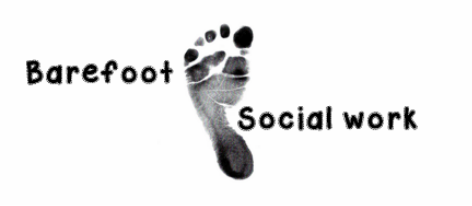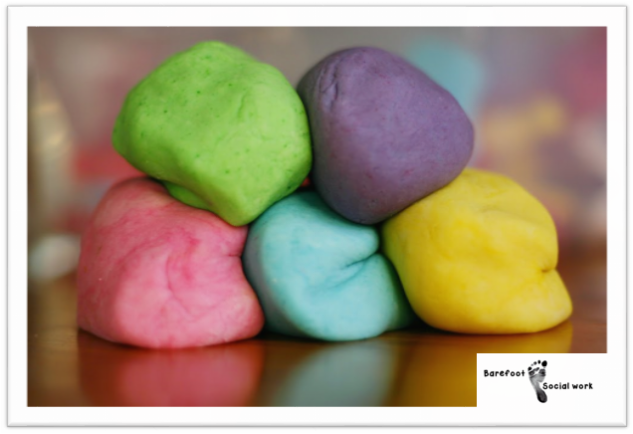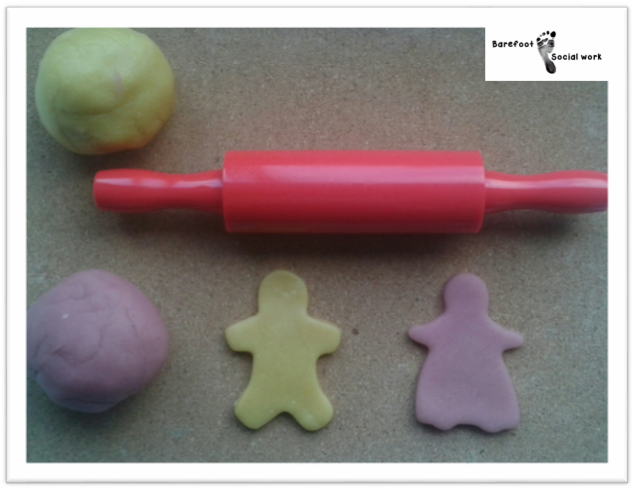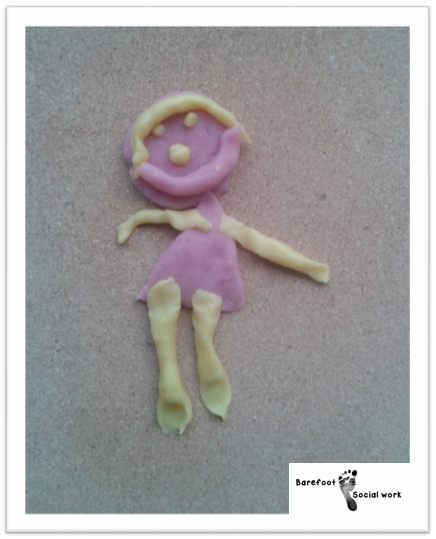|
Play dough is an excellent aide for working with Children but when you are using it with multiple clients it can quickly become mixed up and dry out. I don't know about you, but whenever my kids are playing with the bought stuff I get a bit annoyed when it becomes a mangled mess of colour within seconds. That's why I make my own. It's so cheap, easy and quick to do. Because of this, I really don't mind replacing it more frequently. To make your own you will need: 1 cup of flour 1 cup of water 1 cup of salt 1 table spoon of oil 1 table spoon of Cream of Tartar Food colouring (Supermarkets only seem to stock 10g sachets of Cream of Tartar nowadays so I buy mine online as it works out cheaper that way and lasts 'forever') Heat the water, oil, salt, and food colouring. Once it starts to boil take it off the heat and stir in the flour. Once all the ingredients are combined, knead the dough until you reach the right consistency. Be careful though as it will still be quite hot! Using Play Dough in Direct Work There has been much research into the fact that both children and adults are more open and honest when they have something to hold. That's why I always accept the offer of a brew when making visits to clients. They are likely to make one for themselves at the same time but you don't have to drink it if your not really a tea drinker. I've also mentioned before that children are often more willing to open up when they are engaged in an activity. Play dough can be used for it's sensory qualities, giving children something malleable to hold and squish in their hands whilst you explore issues affecting them and their family. To use in direct work set up a simple invitation to play in a quiet room where you are unlikely to be disturbed. The last thing you want is for someone to walk in looking for a stapler when you are on the brink of an emotional disclosure.
You can also use play dough in directive play for a specific assessment purpose. Children could be encouraged to create themselves or others out of play dough. This is a variation on the draw-a-person technique and should be interpreted in a similar way.
0 Comments
|
AuthorI'm a Qualified Children's Social Worker with a passion for safeguarding and family support in the UK. Archives
August 2016
Categories
All
|




